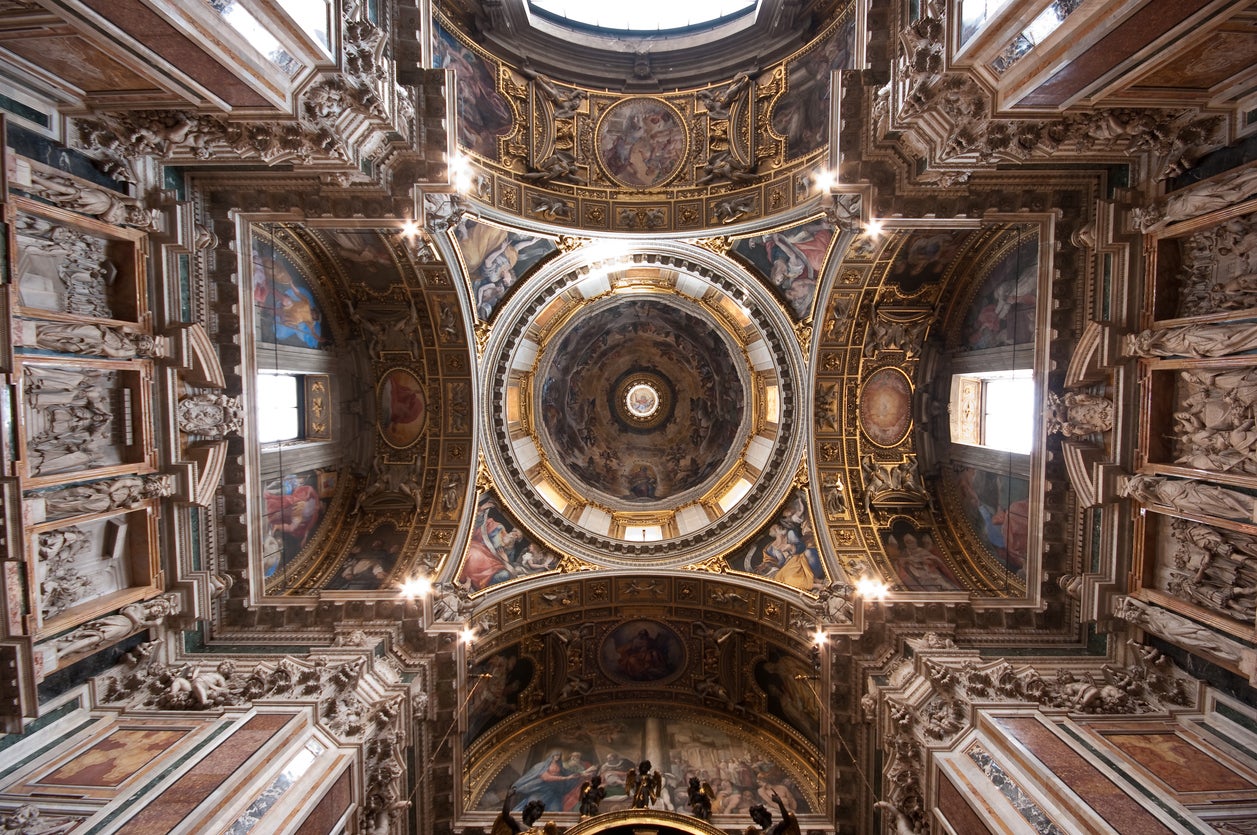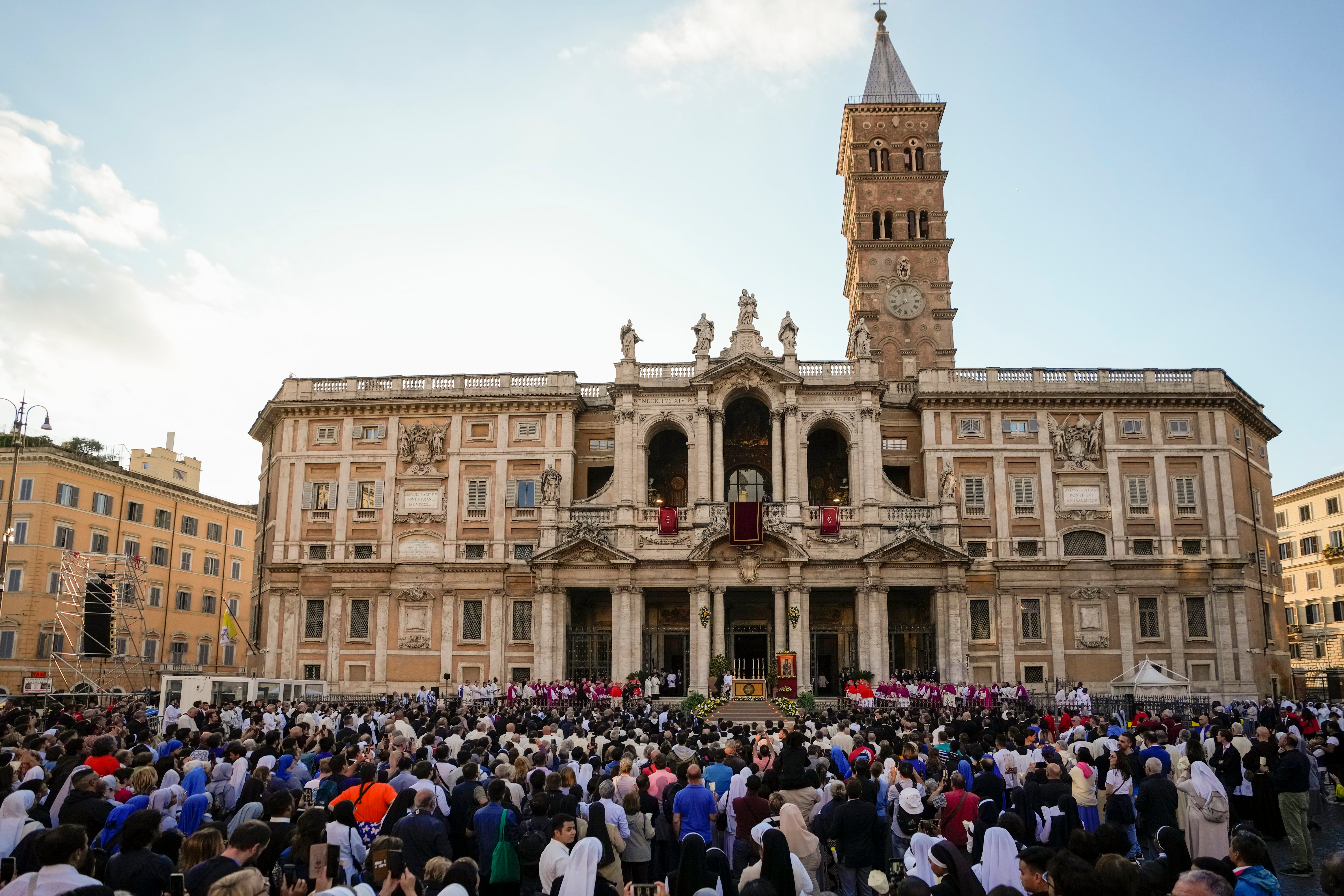Pope Francis was laid to rest in a location that reflected his humble approach to the grand office.
Breaking with tradition, the pontiff, death at the age of 88 was announced on Easter Monday, chose a burial site outside the Vatican – the first pope to do so in 120 years.
The historic funeral service for Pope Francis brought closure to a 12-year papacy marked by what followers said was his humility and simplicity.
Francis’s final resting place was the Basilica of Santa Maria Maggiore, one of the four major basilicas of Christendom in Rome, situated on the Esquiline Hill.
The last pope buried outside the Vatican was Leo XIII in 1903.
Francis’s will stipulated a simple burial “in the earth, without particular decoration”, marked only with his papal name in Latin: Franciscus.

This understated approach aligned with his efforts to bring a more humble touch to the papacy, often eschewing the Vatican’s traditional pomp and opting for simpler rites.
St Mary Major, around 2.5 miles from the Vatican, was dear to Francis because of his devotion to Mary, Mother of God. He prayed there before setting off on and returning from each overseas trip.
“I’ve always had a great devotion to St Mary Major, even before I became pope,” Francis said in his 2024 book El Sucesor (The Successor), a long interview with journalist Javier Martinez-Brocal.

Argentina-born Francis prayed in the basilica early on March 14, 2013, the day after he became the first Latin-American pope.
The church’s gold-leaf ceiling is said to have been made from a batch of the precious metal brought back from the New World by explorer Christopher Columbus.
Francis returned there at key moments in his papacy, praying for an end to the coronavirus pandemic in a locked-down Rome in 2020 and after his abdominal operations in 2021 and 2023.
After his funeral, the procession with the coffin travelled across Rome to the St Mary Major Basilica.
The procession passed the Colosseum, the ancient Roman amphitheatre that is one of Italy’s most iconic sites, tourists and faithful lined the route to snap photographs.
As bells tolled, pallbearers carried the coffin past several dozen migrants, prisoners and homeless people holding white roses in front of the basilica.
Once inside, the pallbearers stopped in front of the icon of the Virgin Mary that Francis loved. Four children deposited the roses at the foot of the altar before cardinals performed the burial rite at his tomb in a nearby niche.
A venerated Byzantine icon of Mary is housed in the Pauline chapel in the left nave of the basilica. A vase of golden roses, donated by Francis in 2023, sits among candlesticks under the icon.

Before reaching the chapel entrance, there is a statue of Mary, Queen of Peace, commissioned by Pope Benedict XV in 1918 to ask God to end the First World War. In May 2022, Francis led an international prayer service for peace in Ukraine and other war-torn places.
The candelabra store room“Just beyond the sculpture of the Queen of Peace, there’s a small recess, a door that leads to a room where candelabras were stored. I saw it and thought: ‘This is the place’,” the pope said in El Sucesor, referring to where he wanted his tomb.
His cypress coffin is not encased in lead with a further wooden outer layer, as has been customary for popes.
In Ancient Rome, the Esquiline was used for the burial of slaves, the poor and those condemned to death. Nowadays, it is home to the Stazione Termini, Rome’s main railway station, and is a multi-ethnic, populous neighbourhood where many film directors and actors have settled.
Santa Maria Maggiore was founded in 432, a year after the Council of Ephesus declared Mary to be the Mother of God. It is the only basilica in Rome that preserves the primitive early Christian structure, although there have been many later additions.
A legend, depicted on a 13th-century mosaic in the basilica’s loggia, tells of a miraculous summer snowfall that occurred on the future site of the church.
Romans gather every August 5 to celebrate the miracle of La Madonna Della Neve, or Madonna of the Snows.
The basilica houses the bodies of seven earlier popes and several religious figures, including Cardinal Bernard Law, former Archbishop of Boston, who became infamous for his role in covering up child sexual abuse by priests.
It is the burial place of Baroque sculptor and architect Gian Lorenzo Bernini. A spiral staircase named after him connects the five floors of a building attached to the church. Its shell shape is said to symbolise the Christian journey from earth to heaven.


